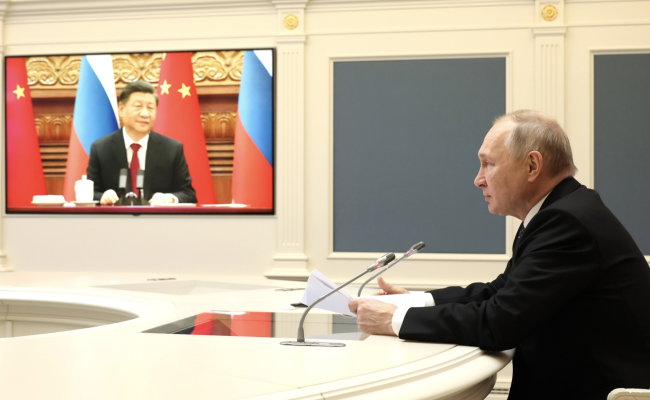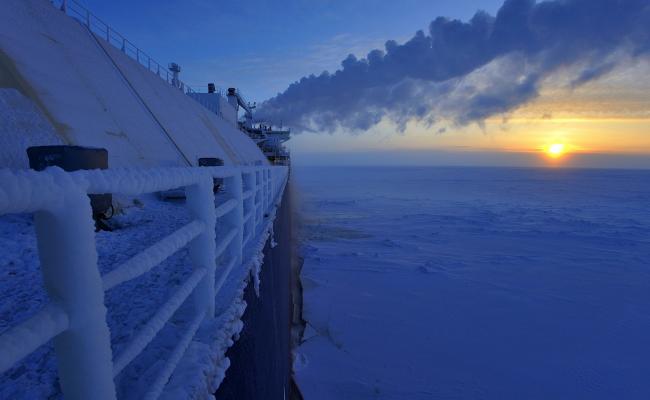Russian Government Approves $1bn for Construction of 6th and 7th Arktika-class Nuclear Icebreakers

Nuclear icebreaker Arktika leaving port. (Source: Rosatomflot)
Russia continues modernizing and expanding its fleet of powerful nuclear icebreakers in an effort to realize year-round shipping along the Northern Sea Route. With the sixth and seventh new Arktika-class icebreakers Russia will operate up to a dozen nuclear icebreakers before the end of the decade.
Earlier this week the Russian government signed off on the construction of two additional nuclear icebreakers of the Arktika-class. The latest procurement means Russia will be operating seven powerful nuclear icebreakers of the LK-60 class (Project 22220), the most powerful of their kind ever built.
Unlike foreign-built ice capable tankers, like Novatek’s Arc7 LNG tanker, Russia’s nuclear icebreakers are constructed domestically and are thus far not impacted by western sanctions following the invasion of Ukraine. .
The Russian cabinet approved budget investments in excess of 70bn rubles, equal to close to $1bn for the construction and initial maintenance of the two vessels. The first vessel of the new Arktika-class, aptly named Arktika entered into service in 2020, followed by Sibir and Ural in 2021 and expected for 2023 respectively.
The fourth and fifth vessels, Yakutia and Chukotka, have been laid down and are expected to follow by 2024 and 2026.
The yet-to-be-named sixth and seventh vessels will follow by 2029.
Also read
More and bigger nuclear icebreakers
In addition, Rosatomflot, the country’s operator of nuclear icebreakers, operates four more nuclear icebreakers of an older type.
The new Arktika-class as well as the older 50 Years of Victory, Taymyr, and Yamal, and Vaygach icebreakers, will be tasked with keeping the waters along the NSR open year-round for the transport of natural resources, especially liquefied natural gas and crude oil from the Yamal and Gydan peninsula.
A new super-icebreaker, able to break wider channels into the ice to escort even the largest tankers, called the Leader or LK-110 class, has also been approved and ordered from the Zvezda shipyard in Russia’s Far East. The commissioning of the Rossiya is expected for 2027, with additional vessels of this type likely to follow after 2030.
Thus, just counting vessels currently in service, under construction, or fully funded, Russia’s fleet of nuclear icebreakers could reach a dozen vessels by the end of the decade. These efforts represent a substantial investment in Arctic infrastructure highlighting the importance for Russia of ensuring reliable navigation in the region.
The fleet of powerful icebreakers will allow Russia to realize its goal of keeping the eastern reaches of the NSR open year-round delivering LNG and oil to more lucrative markets in Asia. Such voyages have already occurred during the beginning and end of the winter season, but remain too challenging to routinely conduct them during the heart of winter.
Also read
Adding new and replacing the old
Toward the end of this decade Russia will also have to start thinking about replacing some of its older nuclear icebreakers. Further investments in icebreakers are likely to follow, says Hervé Baudu, Chief Professor of Maritime Education at the French Maritime Academy (ENSM).
Taymyr, Vaygach and Yamal, all commissioned more than 30 years ago, may run up against decommissioning dates by the end of the decade. Thus the vessels announced this week do not actually expand the size of the fleet but merely maintain the status quo toward 2030.
“The Director of the Northern Sea Route Administration has spoken of a potential of 13 IBs [nuclear icebreakers] to ensure the needs on the NSR are met. However, one has to look at the oldest IB retirement plans with three vessels scheduled for retirement by the end of this decade,” explains Baudu.
"I think in fact that the 2 new IB60 projects will come to position themselves to replace the old IBs,” he continued.
In addition to keeping the NSR itself open, the vessels will also increasingly be tasked with keeping the river channels and deltas of the Ob and Yenisei open. It is here where the Yamal LNG, Arctic LNG 2 and Novy Gate oil terminals are located.
With the recently announced Vostok oil project also located in the delta and adding up to 24m tons of cargo by 2024 and possibly 100m tons by 2030, Russia’s fleet of nuclear icebreakers will remain in high demand.







